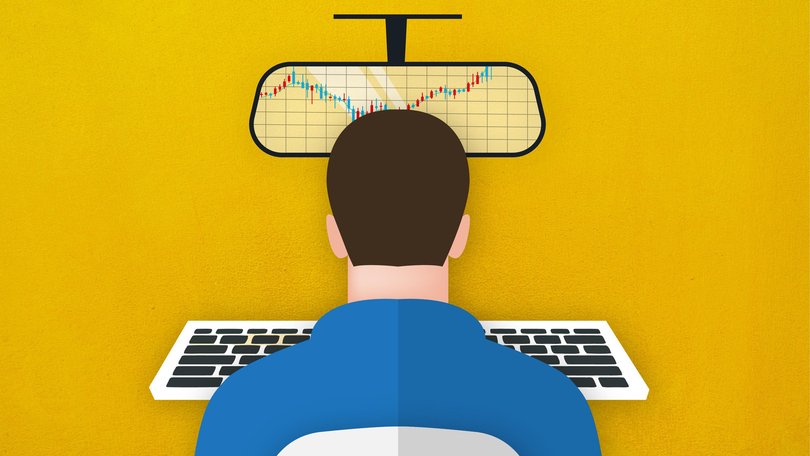THE ECONOMIST: Don’t look through the rearview, markets look forward and so should savvy investors

In a more predictable world, stocks would be easy to price. A share gives its owner claim to a series of cash flows, such as dividends and earnings. Investors would forecast the future value of each, then discount it to a present value based on prevailing interest rates, the riskiness of the cash flow and their own risk appetite. Add them all up, and that would be the stock’s price.
In the actual, radically uncertain world, things are rather more difficult. Few equity analysts, for example, even attempt to forecast earnings more than a few years into the future. But the “discounted cash flow” model is still useful.
Divide stock prices by current earnings, and you get an indication of the discount rate the market applies to future cash flows.
Sign up to The Nightly's newsletters.
Get the first look at the digital newspaper, curated daily stories and breaking headlines delivered to your inbox.
By continuing you agree to our Terms and Privacy Policy.It turns out that this discount rate has historically been a reasonable, if imperfect, guide to the stockmarket’s long-run returns. A low discount rate (or, equivalently, a high price-to-earnings ratio) forecasts low returns, and vice versa.
That is valuable information for investors considering, say, how much to save for retirement, or to allocate to stocks compared with other assets.
It might be surprising that such readily available measures help predict the future. The bigger surprise is that so many investors ignore them altogether. Similar forward-looking measures of expected returns are widely employed by academics and big institutional investors; indeed, they underpin many investment firms’ long-term forecasts of capital markets.
Yet when it comes to individual investors, this reasoning is often turned on its head. Instead of looking forward, surveys consistently show that, as a group, they look back, expecting returns that are extrapolated from those in the past.
Think of it as investing through the rear-view mirror. Such an approach says that if stock prices have soared recently, they will continue to do so. Admittedly, for most of the time since 2009, this has been a better prediction than the supposedly forward-looking ones.
American share prices climbed for most of the 2010s, and price-to-earnings ratios with them, but the bull market just kept going.
Trimming your stock allocation as valuations rose and the academics’ expected returns fell would only have cut your profits. Even after the bear market of 2022, prices began marching up again despite above-average valuations, and then rocketed. No wonder that, this year, retail investors are eager to buy shares whenever the market dips.
And it is not just amateurs who look back rather than ahead. Stock analysts have strong incentives to accurately forecast the earnings growth of the companies they cover. They nevertheless tend to do so by extrapolating from past years, despite the fact that the true correlation between historical and future growth is negative.
Theory suggests that the prices of options, a form of derivative contract, should depend on the volatility traders expect in the future. In practice, the volatility implied by foreign-exchange options often tracks the size of past jumps.
Analysts at Goldman Sachs, a bank, find that over the past year this has led traders of foreign-exchange options to consistently underestimate future volatility. They have been wrongfooted by changing economic conditions and geopolitical uncertainty.
That points to the real problem with rearview-mirror investing: it is all very well until something smacks into the windscreen.
Betting on a surging bull market continuing looked clever in the late 1990s, before the dotcom bubble burst, and again in 2021, before the following year’s crash.
Both times, forward-looking measures would have noted exceptionally high valuations, forecast low returns and rightly cautioned against outsize investments in stocks. As animal spirits roared, such pessimism would have struck many investors as the very worst kind of downer — right up until the plunge began.
The rearview-mirror mindset, writes Antti Ilmanen of AQR Capital Management, a hedge fund, is most pronounced when such investors have recently “got it right”. It is most misleading when this success has come from rising valuations, since this is a trend that can readily go into reverse. And it is most dangerous when “the times they are a-changing”.
For American stocks in particular, all three conditions are in place today.
Those who have spent recent years investing through the rear-view mirror have scored a victory over the ivory tower and some of the world’s grandest financial institutions. But it is probably time to start inspecting the road ahead
Originally published as Don’t invest through the rearview mirror
